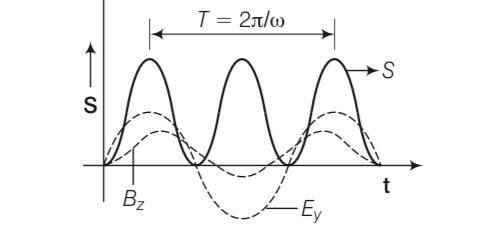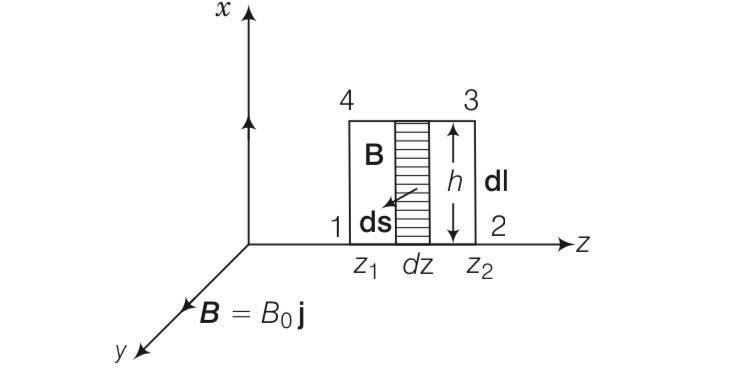Physics NCERT Exemplar Solutions Class 12th Chapter Eight
Get insights from 112 questions on Physics NCERT Exemplar Solutions Class 12th Chapter Eight, answered by students, alumni, and experts. You may also ask and answer any question you like about Physics NCERT Exemplar Solutions Class 12th Chapter Eight
Follow Ask QuestionQuestions
Discussions
Active Users
Followers
New answer posted
5 months agoContributor-Level 10
This is a short answer type question as classified in NCERT Exemplar
Consider and electromagnetic waves, let E be varying along y-axis, B is along z-axis and propagation of wave be along x-axis. Then E*B will tell the direction of propagation of
energy flow in electromagnetic wave, along x-axis.
E= E0sin (wt-kx)j
B=B0sin (wt=kx)k
So S will become sin2 (wt-kx)i
And its variation with time is given below

New answer posted
5 months agoContributor-Level 10
This is a short answer type question as classified in NCERT Exemplar
Aaverage magnetic energy density Iav= c
From eqn we know that B=12
= = 1.71W/m2
New answer posted
5 months agoContributor-Level 10
This is a short answer type question as classified in NCERT Exemplar
Xc=1/2
And displacement current is inversely proportional to Xc so when capacitive reactance increases then displacement current will decrease.
New answer posted
5 months agoContributor-Level 10
This is a short answer type question as classified in NCERT Exemplar
Id=Ic= dq/dt
And q=q0 cos 2πvt
By putting this in above equation Id=Ic= q0 sin2πvt 2
New answer posted
5 months agoContributor-Level 10
This is a short answer type question as classified in NCERT Exemplar
Microwave oven heats up the food items containing water molecules most efficiently because the frequency of microwaves matches the resonant frequency of water molecules.
New answer posted
5 months agoContributor-Level 10
This is a short answer type question as classified in NCERT Exemplar
The orientation of the portable radio with respect to broadcasting station is important because the electromagnetic waves are plane polarised, so the receiving antenna should be parallel to the vibration of the electric or magnetic field of the wave.
New answer posted
5 months agoContributor-Level 10
This is a long answer type question as classified in NCERT Exemplar
(i) UE=
UB=
So total energy density = UE+ UB= +
E= Eo/ and B=Bo/
Uav= +
(ii) We know Eo=cBo and c = 1/
= 1/4 2
UE= UB
New answer posted
5 months agoContributor-Level 10
This is a long answer type question as classified in NCERT Exemplar
(i) =
= Eoh[sin(kz2-wt)-sin(kz1-gwt)]

(ii)
=

(iv) =-
=Eoh[sin(kz2-wt)-sin(kz1-wt)]
=-
Eo=Bow/k=Byc
Eo/Bo=c
New question posted
5 months agoNew answer posted
5 months agoContributor-Level 10
This is a long answer type question as classified in NCERT Exemplar
E(s,t)=
Now displacement current Jd=eo
=
=
= ina/s sin2
Id=
=( )2
=
After solving this we get
Id=
Id=
Iod= (
Taking an Exam? Selecting a College?
Get authentic answers from experts, students and alumni that you won't find anywhere else
Sign Up on ShikshaOn Shiksha, get access to
- 65k Colleges
- 1.2k Exams
- 682k Reviews
- 1800k Answers

